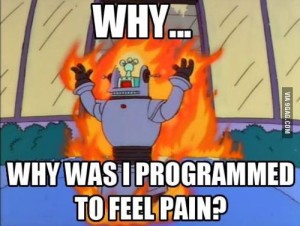Your humble blogger once went on a cruise. After attending an event about what a great idea is to pre-purchase my next 35 years of cruising, I was handed a drink voucher. On my way out of the “presentation” I was handed another drink voucher. And then I thought to myself – what could be better in life than getting not one, but TWO vouchers?!?
Consider, then, the case of Silva v. LSG Sky Chefs, a recent panel decision that was covered extensively and very well by the good folks over at Lexis. I won’t rehash the details, only that the AME in this case found applicant sustained two injuries – a CT rating to 25% and a specific rating to 30% PD. The WCJ awarded two (count em!) supplemental job displacement benefit vouchers, one for each injury.
The defendant balked at having to help applicant open a computer lab, and so appealed. In affirming the WCJ, the appeals board stated that the plain reading of the relevant statutes, namely Labor Code section 4658.5(b) and Regulation 10133.56 both refer to “the injury,” suggesting that a voucher should be awarded for each qualifying injury.
Thus spake the commissioners: “Defendant has provided no relevant authority to the contrary.”
Having seen the proverbial gauntlet dropped before the feet of the collective defense community, your humble blogger wanted to take a crack at answering the challenge.
Sadly, I could find no authority, much like the commissioners pointed out, that would support the contention that applicant is entitled to only one voucher. However, although I came away without citeable authority, I did craft an argument or two that some brave soul might try, running the risk of being laughed out of the hearing room and right into a straight jacket, of course.
Initially, I would point out that not every injury results I a voucher – the only injuries resulting in a voucher are those that cause permanent disability and for which the employer cannot offer regular, modified, or alternative work. (Labor Code section 4658.6) Let’s also not forget the case of Del Taco v. WCAB, Gutierrez, wherein the Court of Appeal held that “[a]n injured employee is not entitled to vocational rehabilitation benefits where the employee is unable to return to work solely because of immigration status.” In other words, even when there is an injury (or more than one injury) and there is permanent disability, the worker might not get the voucher.
So, how does the employer know it can offer regular, modified, or alternative work? By the work restrictions imposed by the physician preparing the report, of course! However, while Labor Code section 4663 provides that “[a]ny physician who prepares a report addressing the issue of permanent disability due to a claimed industrial injury shall in that report address the issue of causation of the permanent disability,” your humble blogger is aware of no such requirement with respect to work restrictions.
And, come on folks – that makes sense! “Ok doctor, you say Mr. Applicant can’t lift more than 20 pounds. How many pounds can he NOT lift because of injury 1; how many pounds can he NOT lift because of injury 2; and how many pounds can he NOT lift because of a synergy of the two?” Well, even the most learned doctor would probably say “ugh… potato?”

Work restrictions are naturally intermingled to the point where one can’t parse them out – permanent disability is not.
Accordingly, the Legislature did not provide a framework for allowing the employer to make an offer for the permanent restrictions based on one of the injuries, but not the other, because, your humble blogger humbly submits to you, the intent was never to have multiple vouchers for the same person at the same time, especially for injuries that temporally overlap.
Turning, by comparison, to the morbid, your humble blogger has a bit of a stretch of an analogy for you:
Take a glance at Labor Code section 4701: “If an injury causes death, either with or without disability, the employer shall be liable, in addition to any other benefits provided by this division … [r]easonable expenses of the employee’s burial …”
An applicant can sustained a cumulative trauma and a specific injury, or even two injuries, with two dates of injury relatively close to each other, and both contribute to the applicant’s death (think of a person working in a factory breathing in harmful fumes causing serious lung damage, only to suffer smoke inhalation as a result of a fire on a specific day – a doctor could opine that both the cumulative breathing of fumes and the specific inhalation of smoke “caused” in part, the death of the injured worker). Or, a worker performing desk duty while healing a leg broken during a fall at work just a month earlier is unable to escape the building during a fire and his (and his family’s) attorney argues the two injuries, together “caused” his death.
If each injury, in part, “causes” the death, should the injured worker be provided with two burial expenses of up to $10,000, for injuries occurring on or after January 1, 2013? (LC 4701(a)(3).) I would think not, but then again, I’m just a humble blogger.




